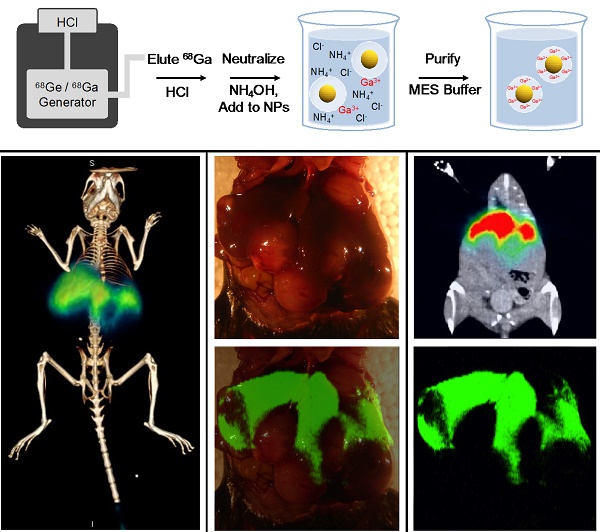当前位置:
X-MOL 学术
›
Theranostics
›
论文详情
Our official English website, www.x-mol.net, welcomes your feedback! (Note: you will need to create a separate account there.)
TGFβ1 Promotes Gemcitabine Resistance through Regulating the LncRNA-LET/NF90/miR-145 Signaling Axis in Bladder Cancer
Theranostics ( IF 12.4 ) Pub Date : 2017-07-22 , DOI: 10.7150/thno.19542 Junlong Zhuang , Lan Shen , Lin Yang , Xiaojing Huang , Qun Lu , Yangyan Cui , Xi Zheng , Xiaozhi Zhao , Dianzheng Zhang , Ruimin Huang , Hongqian Guo , Jun Yan
Theranostics ( IF 12.4 ) Pub Date : 2017-07-22 , DOI: 10.7150/thno.19542 Junlong Zhuang , Lan Shen , Lin Yang , Xiaojing Huang , Qun Lu , Yangyan Cui , Xi Zheng , Xiaozhi Zhao , Dianzheng Zhang , Ruimin Huang , Hongqian Guo , Jun Yan

|
High tumor recurrence is frequently observed in patients with urinary bladder cancers (UBCs), with the need for biomarkers of prognosis and drug response. Chemoresistance and subsequent recurrence of cancers are driven by a subpopulation of tumor initiating cells, namely cancer stem-like cells (CSCs). However, the underlying molecular mechanism in chemotherapy-induced CSCs enrichment remains largely unclear. In this study, we found that during gemcitabine treatment lncRNA-Low Expression in Tumor (lncRNA-LET) was downregulated in chemoresistant UBC, accompanied with the enrichment of CSC population. Knockdown of lncRNA-LET increased UBC cell stemness, whereas forced expression of lncRNA-LET delayed gemcitabine-induced tumor recurrence. Furthermore, lncRNA-LET was directly repressed by gemcitabine treatment-induced overactivation of TGFβ/SMAD signaling through SMAD binding element (SBE) in the lncRNA-LET promoter. Consequently, reduced lncRNA-LET increased the NF90 protein stability, which in turn repressed biogenesis of miR-145 and subsequently resulted in accumulation of CSCs evidenced by the elevated levels of stemness markers HMGA2 and KLF4. Treatment of gemcitabine resistant xenografts with LY2157299, a clinically relevant specific inhibitor of TGFβRI, sensitized them to gemcitabine and significantly reduced tumorigenecity in vivo. Notably, overexpression of TGFβ1, combined with decreased levels of lncRNA-LET and miR-145 predicted poor prognosis in UBC patients. Collectively, we proved that the dysregulated lncRNA-LET/NF90/miR-145 axis by gemcitabine-induced TGFβ1 promotes UBC chemoresistance through enhancing cancer cell stemness. The combined changes in TGFβ1/lncRNA-LET/miR-145 provide novel molecular prognostic markers in UBC outcome. Therefore, targeting this axis could be a promising therapeutic approach in treating UBC patients.
中文翻译:

TGFβ1通过调节膀胱癌LncRNA-LET / NF90 / miR-145信号轴促进吉西他滨耐药
膀胱癌(UBC)患者经常观察到高肿瘤复发,需要预后和药物反应的生物标志物。癌细胞的化学抗性和随后的复发是由肿瘤起始细胞,即癌症干细胞样细胞(CSCs)的亚群驱动的。然而,化学诱导的CSCs富集的潜在分子机制仍不清楚。在这项研究中,我们发现在吉西他滨治疗期间,在化学耐药性UBC中,lncRNA-Low在肿瘤中的低表达(lncRNA-LET)被下调,并伴随CSC群体的富集。lncRNA-LET的敲低增加了UBC细胞的干性,而lncRNA-LET的强制表达则延迟了吉西他滨诱导的肿瘤复发。此外,通过ncncRNA-LET启动子中的SMAD结合元件(SBE),吉西他滨治疗诱导的TGFβ/ SMAD信号过度活化直接抑制了lncRNA-LET。因此,减少的lncRNA-LET增加了NF90蛋白的稳定性,进而抑制了miR-145的生物发生,随后导致了CSC的积累,这是由干性标记HMGA2和KLF4水平升高所证明的。用临床相关的TGFβRI特异性抑制剂LY2157299治疗耐吉西他滨的异种移植物,使其对吉西他滨敏感,并显着降低其致癌性 继而抑制了miR-145的生物发生,随后导致了CSC的积累,这由茎标记HMGA2和KLF4的水平升高所证明。用临床相关的TGFβRI特异性抑制剂LY2157299治疗耐吉西他滨的异种移植物,使其对吉西他滨敏感,并显着降低其致癌性 继而抑制了miR-145的生物发生,随后导致了CSC的积累,这由茎标记HMGA2和KLF4的水平升高所证明。用临床相关的TGFβRI特异性抑制剂LY2157299治疗耐吉西他滨的异种移植物,使其对吉西他滨敏感,并显着降低其致癌性体内。值得注意的是,TGFβ1的过表达加上lncRNA-LET和miR-145的水平降低预示了UBC患者的不良预后。集体,我们证明吉西他滨诱导的TGFβ1失调的lncRNA-LET / NF90 / miR-145轴通过增强癌细胞的干性来促进UBC化学抗性。TGFβ1/ lncRNA-LET / miR-145的综合变化为UBC预后提供了新的分子预后标志物。因此,靶向该轴可能是治疗UBC患者的有前途的治疗方法。
更新日期:2017-12-01
中文翻译:

TGFβ1通过调节膀胱癌LncRNA-LET / NF90 / miR-145信号轴促进吉西他滨耐药
膀胱癌(UBC)患者经常观察到高肿瘤复发,需要预后和药物反应的生物标志物。癌细胞的化学抗性和随后的复发是由肿瘤起始细胞,即癌症干细胞样细胞(CSCs)的亚群驱动的。然而,化学诱导的CSCs富集的潜在分子机制仍不清楚。在这项研究中,我们发现在吉西他滨治疗期间,在化学耐药性UBC中,lncRNA-Low在肿瘤中的低表达(lncRNA-LET)被下调,并伴随CSC群体的富集。lncRNA-LET的敲低增加了UBC细胞的干性,而lncRNA-LET的强制表达则延迟了吉西他滨诱导的肿瘤复发。此外,通过ncncRNA-LET启动子中的SMAD结合元件(SBE),吉西他滨治疗诱导的TGFβ/ SMAD信号过度活化直接抑制了lncRNA-LET。因此,减少的lncRNA-LET增加了NF90蛋白的稳定性,进而抑制了miR-145的生物发生,随后导致了CSC的积累,这是由干性标记HMGA2和KLF4水平升高所证明的。用临床相关的TGFβRI特异性抑制剂LY2157299治疗耐吉西他滨的异种移植物,使其对吉西他滨敏感,并显着降低其致癌性 继而抑制了miR-145的生物发生,随后导致了CSC的积累,这由茎标记HMGA2和KLF4的水平升高所证明。用临床相关的TGFβRI特异性抑制剂LY2157299治疗耐吉西他滨的异种移植物,使其对吉西他滨敏感,并显着降低其致癌性 继而抑制了miR-145的生物发生,随后导致了CSC的积累,这由茎标记HMGA2和KLF4的水平升高所证明。用临床相关的TGFβRI特异性抑制剂LY2157299治疗耐吉西他滨的异种移植物,使其对吉西他滨敏感,并显着降低其致癌性体内。值得注意的是,TGFβ1的过表达加上lncRNA-LET和miR-145的水平降低预示了UBC患者的不良预后。集体,我们证明吉西他滨诱导的TGFβ1失调的lncRNA-LET / NF90 / miR-145轴通过增强癌细胞的干性来促进UBC化学抗性。TGFβ1/ lncRNA-LET / miR-145的综合变化为UBC预后提供了新的分子预后标志物。因此,靶向该轴可能是治疗UBC患者的有前途的治疗方法。



























 京公网安备 11010802027423号
京公网安备 11010802027423号